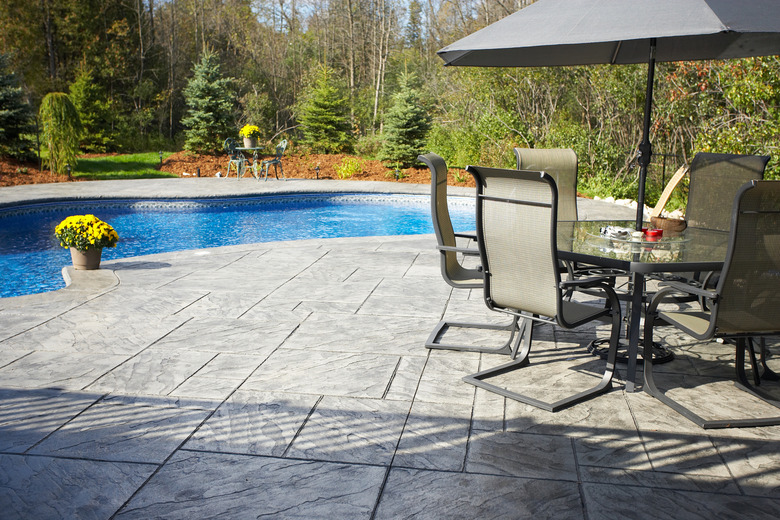What Is Chert-Free Concrete?
Concrete typically contains small stones as part of its aggregate component. Depending on the geology of a particular region where the aggregate is gathered, some of the stones may be porous, with a high capacity to absorb water. These stones are called chert. Because chert can cause damage to concrete in certain climates, manufacturers have developed low-chert and chert-free concrete mixes to prevent this problem.
Step 1
Concrete is made of water, aggregate and cement. The type used is typically Portland cement. The aggregate may consist of crushed rock, gravel or sand, or a combination of these substances. Its consistency ranges from fine to coarse. The cement usually comes as powder that the concrete manufacturer mixes with the other components to create a concrete mix. You or your contractor pour the concrete into the designated area; it then hardens.
Chert Damage
Step 1
If the concrete contains chert and is used in a climate that sees freezing temperatures, these stones can freeze after absorbing water. Freezing causes expansion, and the stones may fracture. Those near the surface can pop out and leave holes or chips. To prevent chert-related damage, buy low-chert or chert-free concrete mixes at a higher price than the standard concrete mix. Chert-free concrete contains no chert or is close to 100 percent chert-free.
Step 2
- Concrete is made of water, aggregate and cement.
- The cement usually comes as powder that the concrete manufacturer mixes with the other components to create a concrete mix.
Climate
Step 1
The use of low-chert and chert-free concrete is only a consideration in cold climates and in more moderate climates in which de-icing chemicals sometimes are necessary. ASTM International, previously called the American Society for Testing and Materials, has set standards for concrete aggregate and for chert in particular for different parts of the United States. Concrete for public works projects in Chicago and in St. Louis, Missouri, for instance, requires a significantly low level of chert, as these areas are classified as severe weathering regions. No chert limitations are required for concrete in public works projects in New Orleans, Louisiana, however.
Considerations
Step 1
While chert popouts generally don't reduce the usefulness or life of your concrete, you may find them unattractive. A showcase patio with blemishes due to chert, for example, is likely unacceptable. Depending where you live, however, it may be difficult to find chert-free mixes because of the aggregate material available in the area to make concrete. Low-chert concrete mixes contain a specified maximum percentage of chert and minimize the risk of problems if chert-free mixes are unavailable.
Step 2
- The use of low-chert and chert-free concrete is only a consideration in cold climates and in more moderate climates in which de-icing chemicals sometimes are necessary.
- Depending where you live, however, it may be difficult to find chert-free mixes because of the aggregate material available in the area to make concrete.
